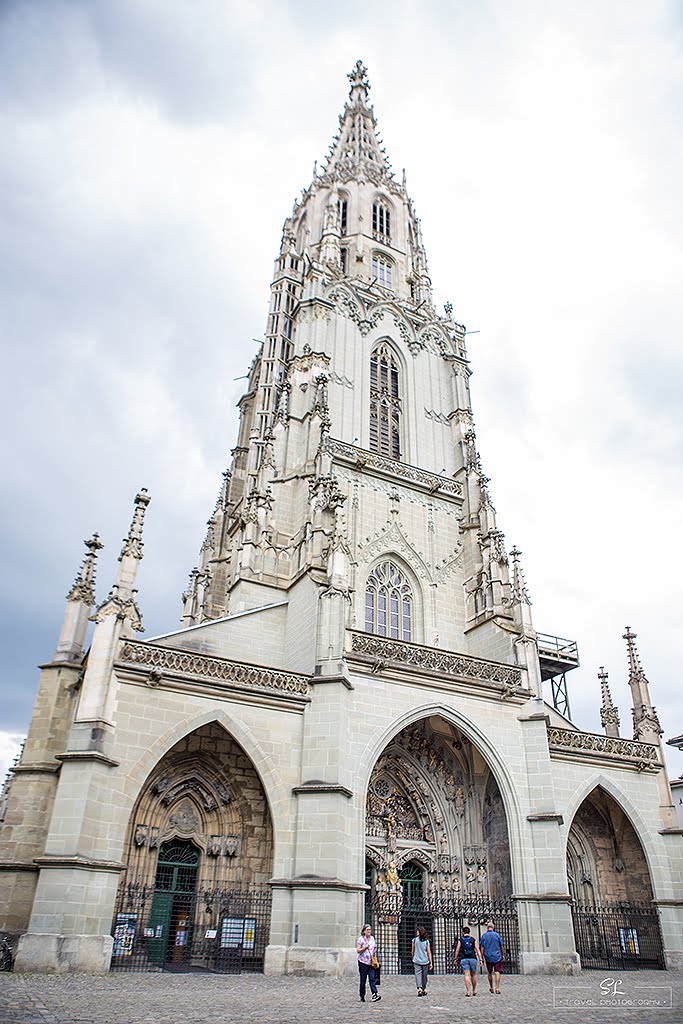Bern Münster, or Bern Cathedral, is a remarkable Gothic cathedral situated in the Old Town of Bern, Switzerland. As the tallest cathedral in the country and one of the most significant examples of Gothic architecture, it holds a place of pride in Swiss cultural and historical heritage. This article explores its architectural evolution, historical influences, and artistic details that make Bern Münster a must-visit landmark.
Table of Contents
ToggleA Journey Through Time: The Long Path to Completion
Beginnings and Challenges (1421-19th Century)
Construction of Bern Münster began in 1421, set against the backdrop of medieval Europe’s Gothic architectural boom. Initially funded by the city and local patrons, the project endured over four centuries, reflecting the changing political and religious tides in Switzerland. One of the major setbacks occurred due to the devastating Basel earthquake in 1356, which delayed construction and required extensive structural adjustments. Further delays arose during the Swiss Reformation, which disrupted religious building projects across Switzerland as the country transitioned away from Catholic influence.
The Tower: A Century-Long Project
One of the cathedral’s most distinctive features, its 100-meter tower, was only completed in the 19th century. The addition of this tower in 1893 was the final piece of Bern Münster’s construction and had a profound impact on the Bern skyline. As Switzerland’s tallest church tower, it became a defining aspect of the city, embodying both architectural achievement and historical perseverance.

Architectural Marvel: A Synthesis of Gothic Styles
French and German Gothic Influences
Bern Münster’s design is a fusion of French and German Gothic styles, showcasing pointed arches, high-vaulted ceilings, and intricate tracery that are emblematic of the Gothic tradition. The cathedral’s architects combined these stylistic elements with local adaptations, resulting in a structure that reflects a distinctly Swiss interpretation of Gothic aesthetics.
Restorations and the Baroque Era
Throughout the centuries, the cathedral underwent various renovations, including the addition of Baroque elements in the 18th century. These modifications reflected the prevailing artistic trends of the period but were eventually removed in the early 20th century to restore Bern Münster to its original Gothic form. This restoration preserved its medieval character, emphasizing the cathedral’s Gothic features over later stylistic changes.

Artistic Masterpieces: Stained Glass and Stonework
The Stained Glass Windows
One of the most celebrated features of Bern Münster is its stunning stained glass windows, which date back to the 15th century. The rose window in the choir is especially notable, portraying the Last Judgment in brilliant detail. Other stained glass panels throughout the cathedral depict scenes from the Bible and important historical events, offering both spiritual and educational narratives. These windows are not only breathtaking works of art but also important historical artifacts, representing the skill of medieval artisans.
Intricate Stone Sculptures
Bern Münster’s façade is adorned with intricate stone sculptures, including detailed depictions of saints, religious figures, and scenes from Christian history. This stonework reflects the careful craftsmanship of its builders and serves as a reminder of the cathedral’s religious significance. Inside, the vaulted ceilings and ornate columns further enhance the Gothic ambiance, creating a sense of awe and reverence among visitors.

Legacy and Cultural Significance
Today, Bern Münster stands not only as a place of worship but also as a significant cultural and historical landmark. Its long history of construction, influenced by the religious and political transformations of Switzerland, makes it a symbol of resilience and artistic dedication. The cathedral draws visitors from around the world, offering a glimpse into the architectural and spiritual heritage of medieval Europe. As the tallest cathedral in Switzerland, it continues to inspire with its grandeur, intricate design, and historical depth.
Conclusion
Bern Münster is more than just a building; it is a testament to centuries of devotion, artistry, and perseverance. From its early Gothic foundation to the eventual completion of its towering spire, the cathedral embodies the rich cultural tapestry of Switzerland. Visiting Bern Münster provides not only a visual feast but also an opportunity to connect with the historical and spiritual journey of a city that has stood the test of time.
